2017 | Berlinale Shorts
„Reframing the Image“
Of presumed documentary moments, a philosophical computer game, sensually direct cinema and films with explosive potential. In this candid interview, Berlinale Shorts curator Maike Mia Höhne explains how assembling a short film programme can represent an opportunity to show a variety of perspectives and invite the audience to perceive and assimilate special points of view along the way.
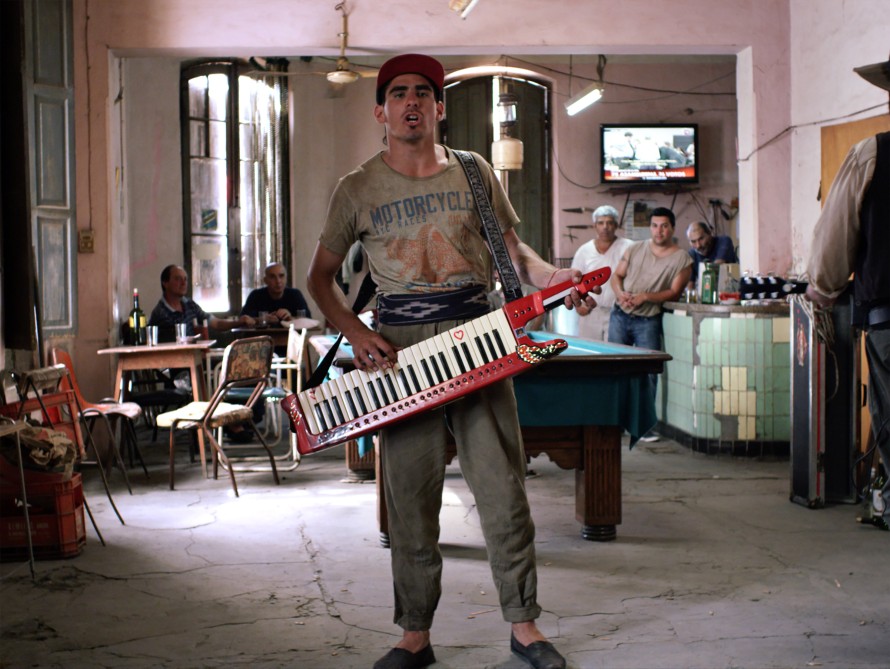
Agustín Alcides Otero in Centauro (Centaur) by Nicolás Suárez
How are we to interpret this year’s leitmotif “Reframing the Image”?
For me, “Reframing the Image” means first and foremost questioning what sort of clichés our reality is occupied by. It’s an invitation to recalibrate one’s own perception, an invitation to let your own conceptions be shaped by something or someone else, by having one’s own gaze channelled through a new perspective. For instance the way Esteban Arrangoiz Julien from Mexico does this in a remarkably elegant manner that leaves a lasting impression in his film Ensueño en la Pradera (Reverie in the Meadow). The opening long shot shows a barren prairie landscape. Somewhat off in the distance, a young couple is conversing, while an automobile approaches from far away. From the exposition of the voice-over narrator, we learn that the young man had returned to Mexico from the United States a year before, due to terrible homesickness. For a home that is firmly in the grip of drug cartels, a home where blackmail and kidnappings are the order of the day. On the screen, the vehicle draws closer. Then a cut to a black screen, and later a gunshot. And immediately the viewers have the feeling that they have grasped the situation, since we all know how the drug trade works from innumerable feature films, right? This moment of apparent understanding is ruptured by the unmasking of this presumably documentary account as pure fiction: The story is an invention, as the narrator goes on to explain. Then – again over a black screen – little children talk about their dreams, how they want to be drug bosses when they grow up. A really affecting approach to the inner picture of what has occurred. After that, you’re so spellbound that you have to catch your breath for a second.
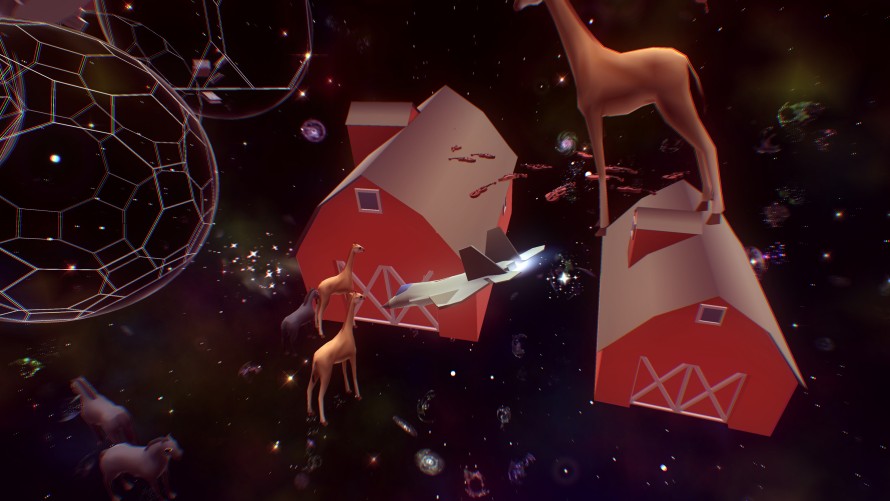
Everything by David OReilly
In his computer game Everything, David OReilly (Please Say Something, Golden Bear for Best Short Film 2009 & RGB XYZ, Special Mention, Berlinale Shorts 2008) takes the leitmotif to another level by choosing a philosophical approach. OReilly had two sources of inspiration for his film: on the one hand, the writings of English philosopher of religion Alan Watts, who above all undertook a deep investigation of the philosophies of Zen, Buddhism in general and Taoism; and on the other hand, the short film Powers of Ten by Charles and Ray Eames from the year 1977, in which the camera is at first focussed on a picnicking couple in a park and then, in steps corresponding to powers of ten in surface area, zooms out further and further all the way into deep space, before finally diving back in towards Earth and the park, all the way into the inside of the human body. Everything is an invitation to be everything and everyone and to overcome the little needy self. This also represents a “reframing”. In the framework of Berlinale Talents, David OReilly will also be speaking about his philosophy and aesthetic, and presenting the game version of Everything.
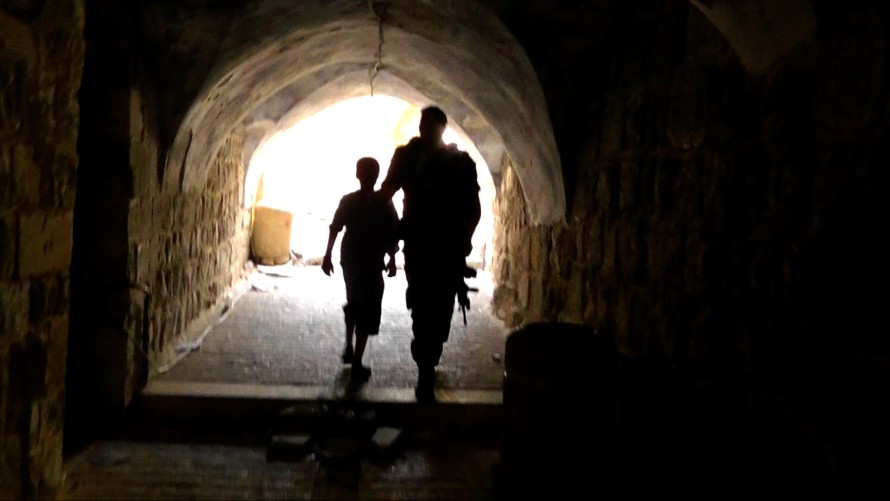
The Boy from H2 (Der Junge aus H2) by Helen Yanovsky
How does this fit with this year’s Forum Expanded title “The Stars Down to Earth” and the section’s associated statement that turning our gaze from the heavens and directing it at the ground of hard facts is more necessary than ever in a world turned upside down?
The great potential of a short film programme is of course precisely the possibility of using shifts, being able to show one side and the other too and offer various perspectives. With his film A Man Returned (Silver Bear for Best Short Film 2016), Mahdi Fleifel granted audiences nuanced glimpses into Lebanon’s largest Palestinian refugee camp – beyond all preconceived notions. With The Boy from H2, once again this year the section’s programme features a similarly concrete work in the style of direct cinema, which makes the everyday existence of a 12-year-old Palestinian boy in the divided city of Hebron immediately available for the viewer to experience. The sector H2 is under the control of the Israelis and the Palestinians’ freedom of movement is severely limited. The protagonist takes us out on the street with him, we accompany him on his everyday trek through the innumerable checkpoints, the division of the city becomes directly tangible. A nightmare.
The big question behind many of this year´s works is: How can balance be achieved in this world turned upside down? The programme is defined by the colours black and green. For me, it’s an expression of the necessity to re-enter into a dialogue – with our fellow humans, with nature – and the need to consume less, and all that is possible without the films resorting to moralising. They leave plenty of space for the viewers’ minds to wander.
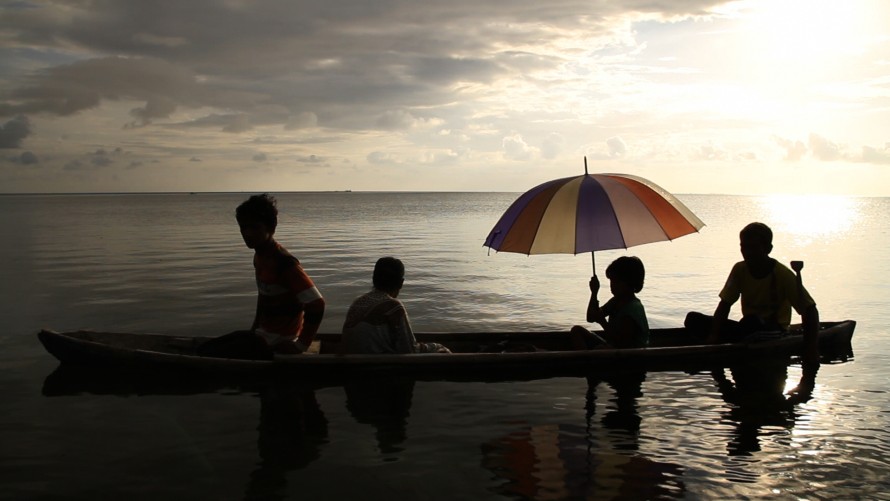
Oh Brother Octopus by Florian Kunert
In Florian Kunert’s Oh Brother Octopus, the equilibrium of the world has been thrown off. The apocalypse approaches in the form of an artificial world, one which reminds me of Dubai. It annihilates the basis of human existence and is at the same time a promise of salvation.
Last year you described your own particular hallmark as a curator with the terms sex and politics, as well as sensuality and the body. Where can we find the sensual and corporeal in this year’s programme?
Fuera de Temporada (Out of Season) by Sabrina Campos from Argentina is a story without a climax. The film tells of a love that once was but is no more. The sensuality is created by the portrayal of bodies in search of themselves – without a climax, and without drama.
But when I talk about sensuality, I am by no means only referring to the sexual. I mean the direct, the finely-pored, the touchable. The cliché that is dissolved by unravelling it.
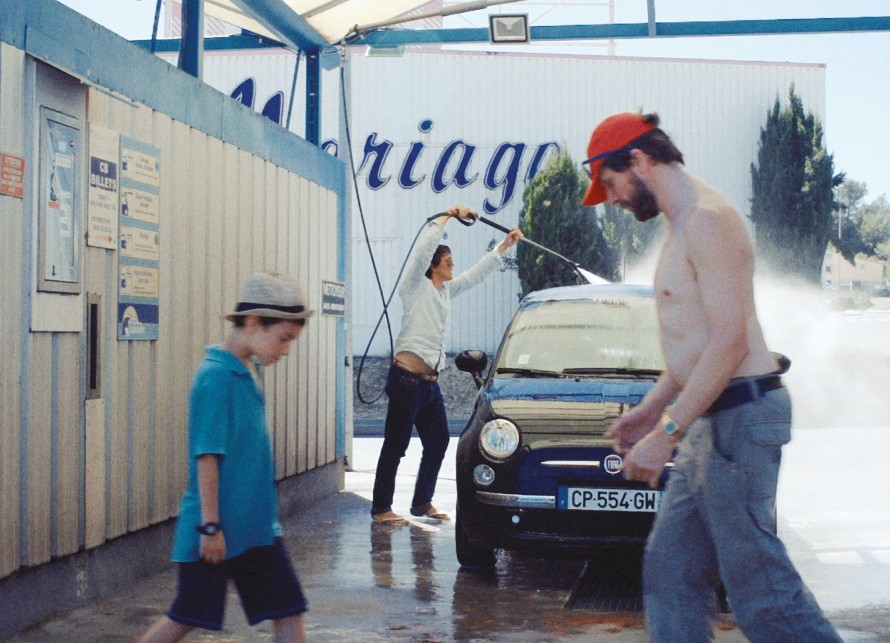
Balthazar Monfé, Vincent Minne and Jean-Benoît Ugeux in Le film de l'été (The Summer Movie) by Emmanuel Marre
In Le film de l'été (A Summer’s Film) by Emmanuel Marre, there is a scene in which two friends are talking with one another. One of them is newly in love. “Then you must have fucked like rabbits, huh?” asks the other. “No, actually we didn’t. We were just together, that’s all. And since then I’ve been using the shower gel that she bought the whole time.” What a great, concrete image for love! While the one guy is totally in the here and now, the other is trapped in his world of concepts that has absolutely nothing to do with the real world of his counterpart.
A building can be a body too, as in Fishing is Not Done on Tuesdays, where the house becomes a cinematographer that we peer through and which guides our gaze. The actions depicted on the screen elude a definitive interpretation. Only the cement of the house remains concrete and thus comprehensible.
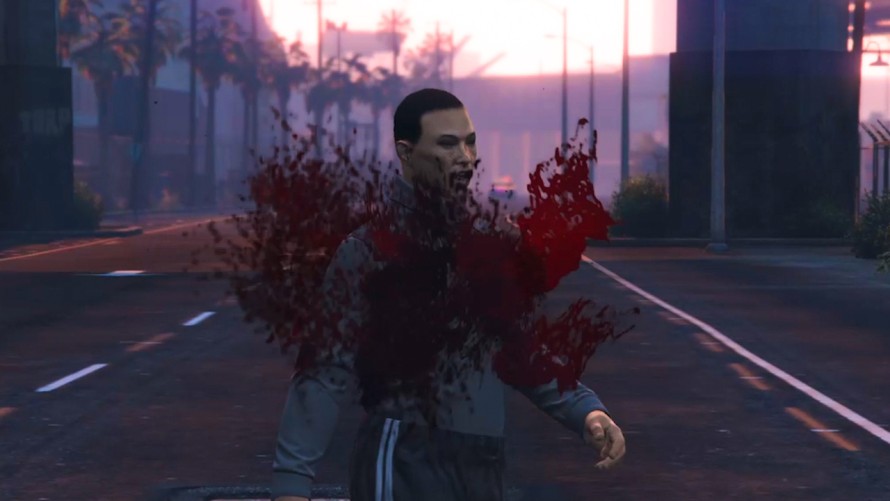
Martin Pleure (Martin Cries) by Jonathan Vinel
Martin Pleure (Martin Cries) on the other hand was born exclusively of a feeling, which is precisely its strength. Jonathan Vinel (Tant qu’il nous reste des fusils à pompe, Golden Bear for Best Short Film 2014 & Notre Héritage, Berlinale Shorts 2016, both in collaboration with Caroline Poggi) rearranges sequences from the computer game “Grand Theft Auto V” into a lyrical narrative on loss, longing and anger. It conveys its sentiment squarely, doesn’t shy away from big emotions or strong images and refuses to pay tribute to the larger discourse regarding the “harmful” influence of computer games.
The Crying Conch also offers a sensual cinematic experience through its direct addressing of the audience – performed in a manner analogous to the use of the choir in Greek tragedy. A man stands in front of the dark sea and shouts into the night towards the viewers: Franswa Mackandal was carried off to Haiti against his will as a slave in the 18th century, where he subsequently became the leader of the revolt against the French colonial rulers. Vincent Toi’s film is set in the present – Mackandal is a construction worker who is ordered around by his foreman. Just as back then, he sees through the mechanisms of power and sets about to defend himself. And thus history reverberates as an echo once again in the present day.
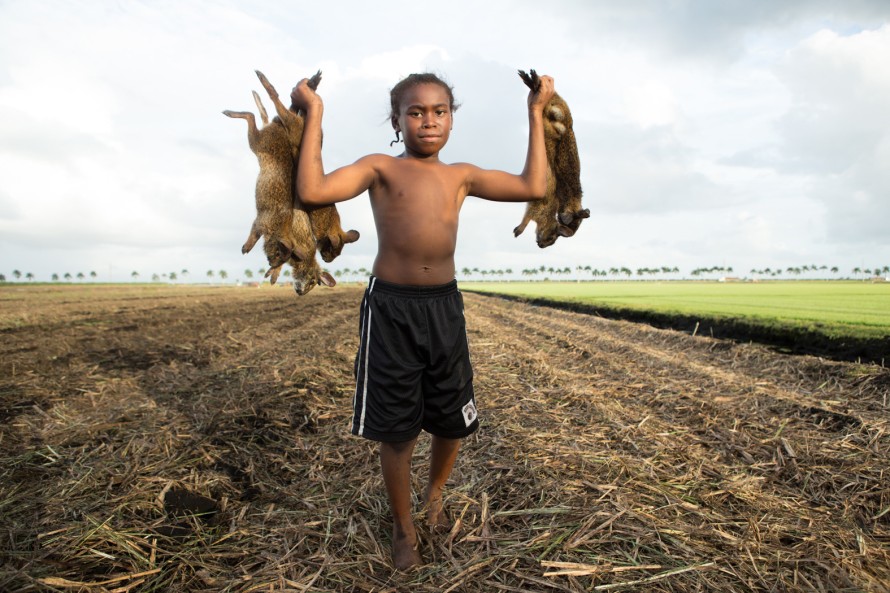
The Rabbit Hunt by Patrick Bresnan
With its directness, a film like The Rabbit Hunt doesn’t offer many options for viewers to distance themselves either. Patrick Bresnan has already shot several documentary films in the small town of Pahokee in the state of Florida. In The Rabbit Hunt, he shows young men on the threshold of adulthood who embark on a rabbit hunt that resembles an initiation ritual. When the fields are burned for the sugar cane harvest and the rabbits flee from the flames, concentration, speed and courage are in high demand, as the animals are caught and killed with bare hands. That’s very direct cinema and I am sure that the audience is going to react to it. And that’s exactly what it’s all about of course: to get us activated.
What sort of challenges did you have to deal with in assembling the programme?
Putting together the programme was indeed very interesting this year. Especially considering the fact that each and every individual work possesses great explosive potential. I invited one film after another, assembled the programme step by step and thought really long and hard about the overall composition.
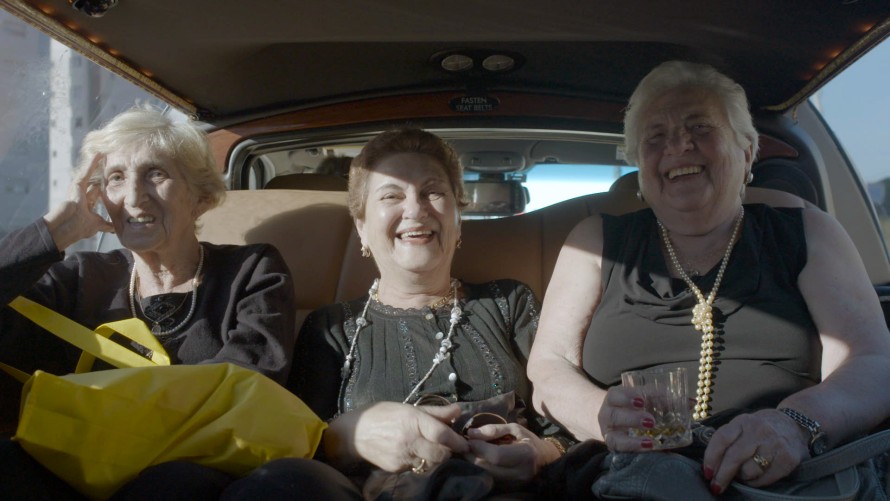
Libreta Michalchov, Marina Reines and Rita Berkowitz in Miss Holocaust by Michalina Musielak
For instance, contrary to my first impulse, I didn’t place Miss Holocaust at the end of a programme, because the film already offers space to reflect on the represented content during its immediate reception. Since 2012, there has been an annual beauty pageant for holocaust survivors organised in Haifa in Israel. During preparations for the pageant, the contestants learn to present themselves and practice strolling down the catwalk. The competition is the subject of heated debate within Israeli society. For the women, it’s something positive, because their motivation is to keep the memory alive. Especially considering the nature of the subject, I think it’s a real accomplishment how the filmmaker Michalina Musielak manages to maintain a distance between the viewers and protagonists of her film in order to allow for reflection.
By way of contrast, I put Kometen (The Comet) by Victor Lindgren (Ta av mig, Teddy Award for Best Short Film 2013), which is incredibly powerful for its part due to its concentration, at the beginning of the programme – even before Miss Holocaust. In fewer than ten images, Lindgren relates the flight to safety, arrival and loneliness of a young man from Somalia. Both films are united by the question of how life can go on when it’s all over. They thus serve as a departure point for a programme that slowly embarks on an upward climb.
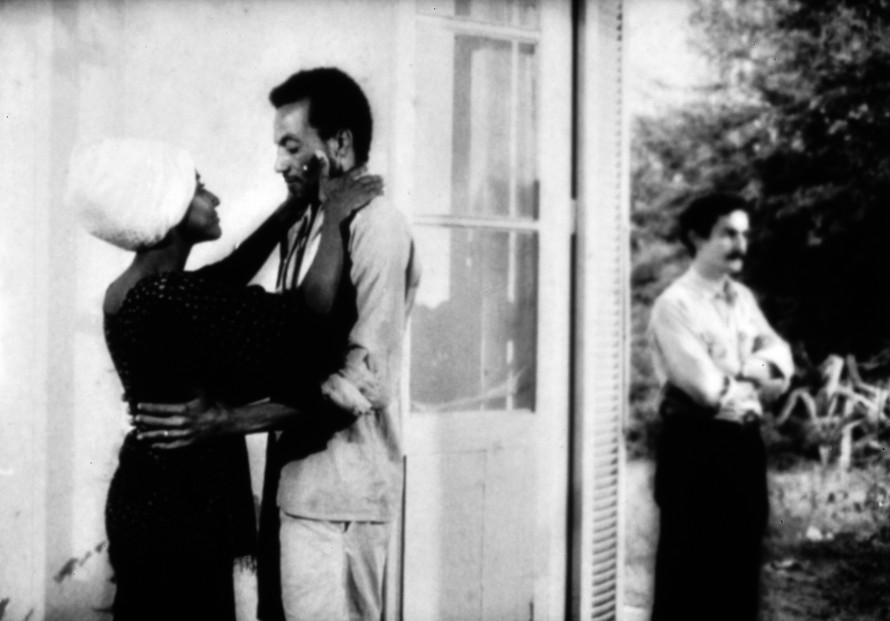
Elisa Pestana and Mohamed Zinet in Monangambeee by Sarah Maldoror
One of the films in this year’s programme is being screened out of competition. Why did you decide to include Monangambeee in your selection?
Monangambeee opens up a dramatic arc that allows us to bring the contemporary films into a dialogue with their precursors. “Monangambeee”, which can be translated as something like “white death”, was once upon a time the alarm call that warned of the arrival of Portuguese slave traders in Angola. “Today it serves as a signal to come together for the People’s Liberation Front,” as critic Nadia Kasji wrote in the 1970s. Director Sarah Maldoror, herself born on the French island state of Guadeloupe, shot her own film for its part in Algeria – in the spirit of the liberation of Africa and with official support from the C.O.N.C.P. (The Conference of Nationalist Organizations of the Portuguese Colonies) and technical assistance from the Algerian People’s National Army. The film makes use of a misunderstanding to illustrate in an exemplary fashion the difficulties in mutual comprehension between colonial rulers and those they oppress: A woman visits her husband in prison. In parting, she promises him a “complet”, a simple dish of beans and fish in Algeria. For the oppressors however the word “complet” means “suit”. And so it is that the wife’s promise is interpreted by the guards as an indication of an impending attempt to appeal the husband’s sentence in front of a tribunal, which ends up having dire consequences for the imprisoned man. Sarah Maldoror foregoes illustrating the oppression by depicting presumably realistic methods of torture, instead choosing to employ a mimetic representation of the sensations. Liberating one’s own culture from the gaze of the colonial rulers, that is what’s at stake here.
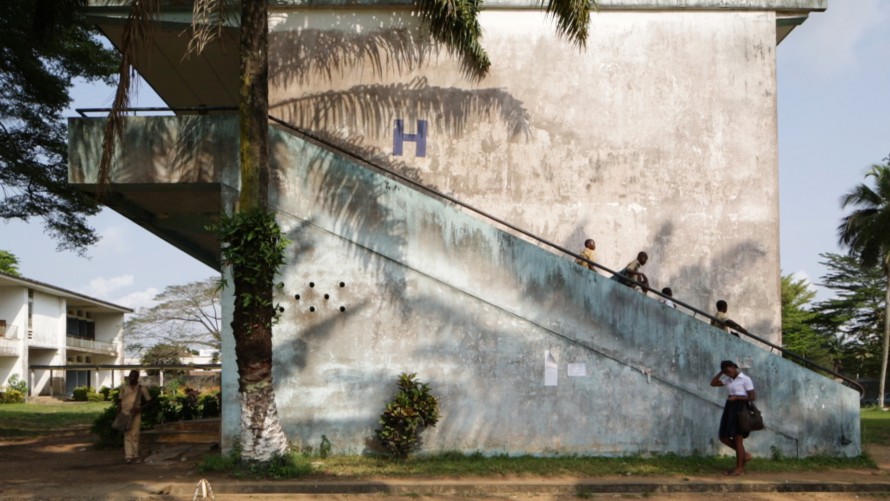
Avant l'envol (Before the Flight) by Laurence Bonvin
In Altas Cidades de Ossadas (High Cities of Bone) João Salaviza (Rafa, Golden Bear for Best Short Film 2012) finds a similarly strong image for the question of the place that society assigns to any given individual. The rapper Karlon was born and raised in a housing estate near Lisbon. His songs explore his Capeverdean-Creole roots. Salaviza translates this theme into a fictional film about Karlon, wherein the protagonist withdraws from his council estate to the sugar cane fields. Individuals from his world at home attempt to convince him to return, but the rapper simply doesn’t want to go back.
In her film Avant l'envol (Before the Flight) , Laurence Bonvin examines the architectural style of the government buildings constructed in the wake of Ivory Coast’s gaining its independence from France – the parliament, the city hall, the headquarters of the Ministry of Finance. Back then, foreign architects were commissioned with the unique task. The French architect Henri Chomette, who emigrated to Ethiopia in 1949, designed many of the public buildings that today still number among the most distinctive in Abidjan. In Avant l'envol too, the buildings are bodies, the architecture becomes the protagonist.
I am very much looking forward to perceiving and assimilating these special perspectives together with our audience and filmmaking guests for eleven wonderful days during the Berlinale.